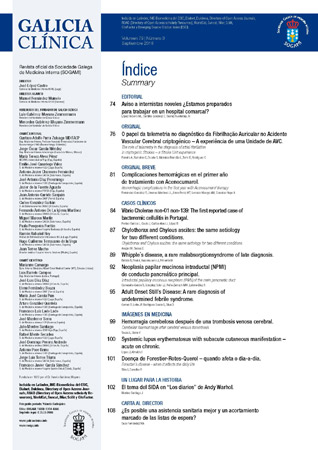Abstract
Cerebral venous thrombosis (CVT) is an uncommon entity, accounting for up to 1% of all strokes.1,2,3 The diversity and lack of specificity on its clinical presentation may lead to delays or even failure of the diagnosis.1,3,4 In recent years, its recognition has increased due to the greater accessibility to ancillary diagnostic exams.2,5 Up to 25% of patients may present with normal cerebral computed tomography (CT), with cerebral magnetic resonance imaging (MRI) being the classic gold standard for diagnosis. Given the limited availability of MRI in the emergency department (ED) of several hospitals, Veno-CT was proved to be a reliable alternative, with no diagnostic inferiority when compared to MR.2,4,6
We describe the case of a 58-year-old woman, medicated with oral contraceptive (Estradiol + Gestodene), who resorted to the emergency department complaining of a 3-week evolution left temporal headache of increasing intensity, with no analgesic relief, associated with phono-photophobia, nausea and vomiting. She reported 2 episodes of lipothymia on the previous 2 days. There were no findings on physical objective examination, namely neurological examination.
The CT scan performed revealed hemorrhage in the left cerebellar hemisphere, also indicating hyperdensity of the left lateral sinus (Fig 1). The MRI performed the next day confirmed the presence of CVT, described as extensive (Fig 2). Anticoagulation with enoxaparin was started, later on switched to warfarin. The study of thrombophilias was negative, and the only predisposing factor for CVT identified was the use of oral contraceptives.
The posterior fossa has an extensive venous drainage, with several collaterals draining to multiple sinuses, which may explain the rarity of cerebellar involvement in CVT, either isolated form or with supratentorial involvement.3,4 The first line treatment is intravenous heparin, even in cases with associated hemorrhage.5
© 2018 Galicia Clínica.
Complete article | Pdf article


